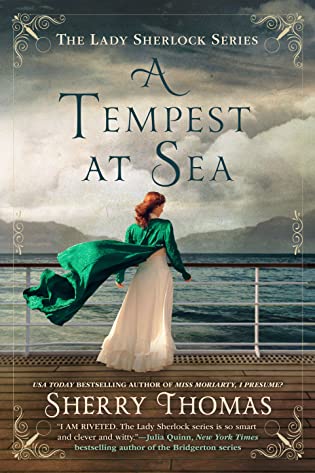 A Tempest at Sea (Lady Sherlock #7) by Sherry Thomas
A Tempest at Sea (Lady Sherlock #7) by Sherry Thomas Format: eARC
Source: supplied by publisher via Edelweiss
Formats available: hardcover, large print, paperback, ebook
Genres: historical fiction, historical mystery
Series: Lady Sherlock #7
Pages: 336
Published by Berkley on March 14, 2023
Purchasing Info: Author's Website, Publisher's Website, Amazon, Barnes & Noble, Kobo, Bookshop.org, Better World Books
Goodreads
Charlotte Holmes’s brilliant mind and deductive skills are pulled into a dangerous investigation at sea in the new mystery in the bestselling Lady Sherlock series.
After feigning her own death in Cornwall to escape from Moriarty’s perilous attention, Charlotte Holmes goes into hiding. But then she receives a tempting offer: Find a dossier the crown is desperately seeking to recover, and she might be able to go back to a normal life.
Her search leads her aboard the RMS Provence, sailing from Southampton for the eastern hemisphere. But on the night Charlotte makes her move to retrieve the dossier, in the midst of a terrifying storm in the Bay of Biscay, a brutal murder also takes place on the ship.
Instead of solving the crime, as she is accustomed to doing, Charlotte must take care not to be embroiled in this investigation, lest it become known to those who harbor ill intentions that Sherlock Holmes is abroad and still very much alive.
My Review:
Murders at sea are even more claustrophobic and self-contained than the traditional English cozy house murder. When a murder occurs on shipboard, the suspect pool and the detectives, whether any of the above are professionals or mere amateurs of convenience, are all stuck with each other and bereft of outside help, information or escape until the ship reaches port.
(If the idea of a shipboard mystery sounds like fun, try A Restless Truth by Freya Marske. It’s also a fun shipboard historical mystery, but with more than a touch of spells and magic.)
There’s no possibility of scapegoating a mysterious outsider on a ship, once it’s out of range of land, as the RMS Provence certainly is by the time that Jacob Arkwright’s body is found. Charlotte Holmes, AKA Sherlock Holmes, can be certain that his murderer is among the small number of passengers and crew already aboard.
It should be an easy case for her to solve. And it would be, if Charlotte, even if she has to masquerade as Sherlock yet again, was traveling as herself. Or as even as himself.
They’re not, and that’s where all the sticky wickets come in and stick themselves quite firmly to Charlotte’s person, traveling incognito as the redoubtable – and quite real if otherwise occupied – Mrs. Ramsay.
It’s a mask that Charlotte can’t afford to drop – and not just because suddenly revealing her subterfuge will make her the primary suspect in the murder. Even though she and her friends and colleagues aboard ship fear her unmasking at every turn.
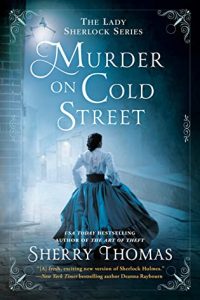 Because the detective who just so happens to be aboard the Provence is none other than the intelligent and implacable Inspector Brighton, a Scotland Yard CID investigator that Holmes got the better of – read as exposed that the Inspector’s implacability had sent him barking up the wrong suspect tree – in Murder on Cold Street.
Because the detective who just so happens to be aboard the Provence is none other than the intelligent and implacable Inspector Brighton, a Scotland Yard CID investigator that Holmes got the better of – read as exposed that the Inspector’s implacability had sent him barking up the wrong suspect tree – in Murder on Cold Street.
Murder investigations uncover all kinds of secrets that their keepers would prefer to remain secret, whether they have anything at all to do with the case at hand or not. Charlotte’s travel arrangements do not, but the Inspector would very much enjoy exposing her all the same.
An exposure that would have potentially deadly consequences for Charlotte and all she holds dear. So she is forced to work through others to lead the investigation to a truth that will expose the murderer while keeping Charlotte and her purpose for being aboard hidden in the shadows.
It’s not an easy job, but it’s all in a day’s – or at least a voyage’s – work for Sherlock Holmes. With just a little more help than usual from her friends.
Escape Rating B+: After the events of the previous book in the series, Miss Moriarty, I Presume? Charlotte is presumed dead after facing Moriarty in her own personal version of the original Holmes story, The Final Problem. Hence Charlotte’s need to travel incognito.
Charlotte may be hiding from Moriarty aboard the Provence, but she is also in search of a solution to her dilemma. While Moriarty is hunting her, she is hunting him. Or at least, she is hunting his agents and their documents, at the behest of this world’s version of Mycroft. Who is not, in this case, her brother, but rather the brother of her friend and lover, Lord Ingram Ashburton.
Charlotte has made a deal with Lord Remington, AKA Mycroft. If she finds a particular stolen document, he’ll grant her official protection by his office, a protection that is potentially deadly to Moriarty if breached.
That Remington seems to have hampered her investigation at every turn – or at least that his agents have – is probably fodder for the next book. (I sincerely hope!)
Aboard the Provence, the game is very much afoot in a way that Charlotte can’t afford to play as herself for fear of exposure to Moriarty’s agents aboard the ship. Leaving Lord Ingram to serve as her eyes and ears while Charlotte and Mrs. Watson do a bit of surreptitious investigation in the persons of a couple of old biddies and Charlotte’s mother nearly lies her way into a murder charge.
It’s not all fun and games, but it is quite a bit of a lark for the reader as misdirection and mistaken identities abound at every turn. Charlotte is in her element while her friends battle their own nerves on her behalf.
As much as I enjoyed the mystery in this tempest, the way the story was told didn’t quite work as well as it might have – at least for this reader. The mystery is investigated and revealed in two tracks.
The first track is the investigation as it proceeds from day to day as the ship steams from Portsmouth to Gibraltar, with Lord Ingram serving as Inspector Brighton’s amanuensis as he interviews the potential suspects and goes further and further astray.
And then we go back in time a bit and observe Charlotte’s and Ingram’s real discovery of the murder, and their attempts to both cover up that initial discovery, hide Charlotte’s true identity, set up a series of subterfuges AND do a much more thorough and successful investigation of the crime while hiding more or less in plain sight.
The slips between those two tracks weren’t always obvious to me as the reader, although that may be a result of reading the electronic Advance Reading Copy and this will not be an issue for readers holding the final version of the book in their hands or devices.
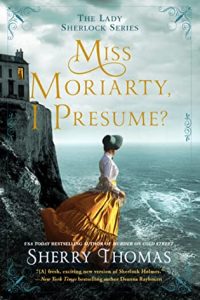 That niggle aside, the mystery was still fascinating. I loved watching Charlotte work while hiding behind the kind of character masking that the original Holmes did so well – instead of hiding behind Sherlock Holmes himself.
That niggle aside, the mystery was still fascinating. I loved watching Charlotte work while hiding behind the kind of character masking that the original Holmes did so well – instead of hiding behind Sherlock Holmes himself.
I’m very glad that Charlotte Holmes’ adventures are clearly not over at the conclusion of this case, because this reinterpretation of the Holmes’ canon just gets better and better as the characters become more firmly developed and we get more firmly invested in them.
As Charlotte managed to complete her assignment, in spite of the interference of conducting an undercover murder investigation during her undercover operation, I’m looking forward to what happens next in her continuing story, whenever it may appear.

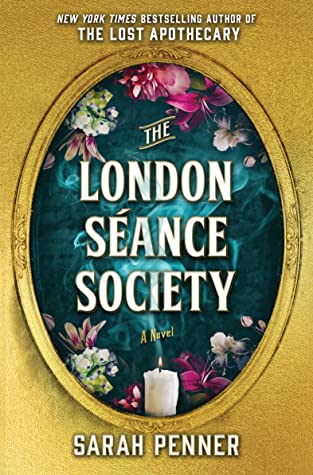 The London Séance Society by
The London Séance Society by  Escape Rating A: I picked up The London Séance Society because I enjoyed the author’s debut novel,
Escape Rating A: I picked up The London Séance Society because I enjoyed the author’s debut novel, 
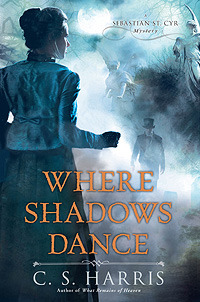 Where Shadows Dance (Sebastian St. Cyr, #6) by
Where Shadows Dance (Sebastian St. Cyr, #6) by 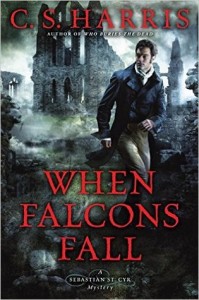 I was hooked back in 2005, and devoured the first five books in the series as they were published. Until, as so many things do, the series got caught up in the black hole of “so many books, so little time” and I stopped following until I was asked to
I was hooked back in 2005, and devoured the first five books in the series as they were published. Until, as so many things do, the series got caught up in the black hole of “so many books, so little time” and I stopped following until I was asked to 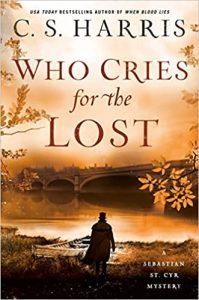 And I love the way the known historical conflicts of the time, both in government in England and in the wider world, are neither ignored nor brushed aside but instead inform every aspect of the mystery and give it depth and substance. All while a murder is committed, the crime is investigated, and evil gets its just desserts even as the story acknowledges that there are plenty of other – and often worse – evils afoot in that wider world that Devlin has yet to deal with. If he can.
And I love the way the known historical conflicts of the time, both in government in England and in the wider world, are neither ignored nor brushed aside but instead inform every aspect of the mystery and give it depth and substance. All while a murder is committed, the crime is investigated, and evil gets its just desserts even as the story acknowledges that there are plenty of other – and often worse – evils afoot in that wider world that Devlin has yet to deal with. If he can. The Cliff's Edge (Bess Crawford #13) by
The Cliff's Edge (Bess Crawford #13) by 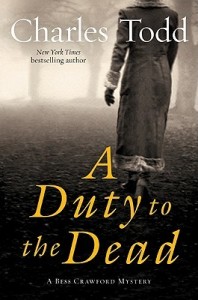 The cliff’s edge of the title is both literal and figurative in this 13th entry in the
The cliff’s edge of the title is both literal and figurative in this 13th entry in the 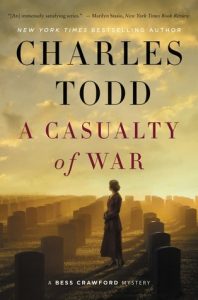 Escape Rating B-: As much as I have enjoyed this series, I believe that it is time for it to come to an end unless it makes a major change in direction. Because Bess has been in limbo for several entries now – at least since book 10,
Escape Rating B-: As much as I have enjoyed this series, I believe that it is time for it to come to an end unless it makes a major change in direction. Because Bess has been in limbo for several entries now – at least since book 10, 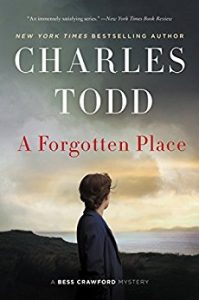 So Bess is in Yorkshire in the midst of this case, which is quite a muddle that doesn’t seem much clearer at its end. Not that the cause of the whole thing isn’t found, but rather that the solution isn’t terribly cathartic and doesn’t seem to resolve much of the surrounding tension.
So Bess is in Yorkshire in the midst of this case, which is quite a muddle that doesn’t seem much clearer at its end. Not that the cause of the whole thing isn’t found, but rather that the solution isn’t terribly cathartic and doesn’t seem to resolve much of the surrounding tension.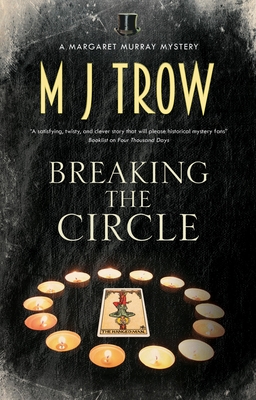 Breaking the Circle (Margaret Murray, #2) by
Breaking the Circle (Margaret Murray, #2) by 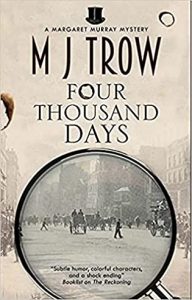 Escape Rating A-: What makes this series work, at least for this reader, is the voice of its protagonist Dr. Margaret Murray. Not just because she was a real person – as were both Flinders Petrie and Edmund Reid, but because she led the kind of life, had the type of career, and left behind the writing to make the adventures that her fictional avatar gets herself into seem not just plausible but even possible.
Escape Rating A-: What makes this series work, at least for this reader, is the voice of its protagonist Dr. Margaret Murray. Not just because she was a real person – as were both Flinders Petrie and Edmund Reid, but because she led the kind of life, had the type of career, and left behind the writing to make the adventures that her fictional avatar gets herself into seem not just plausible but even possible.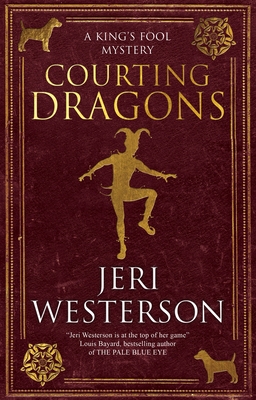 Courting Dragons (A King's Fool mystery, 1) by
Courting Dragons (A King's Fool mystery, 1) by 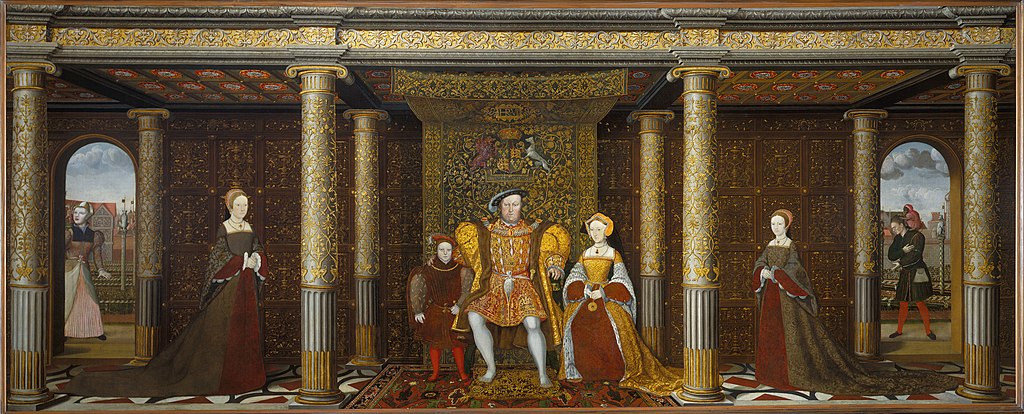
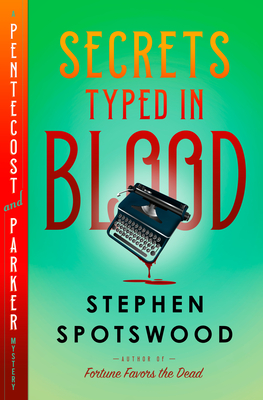 Secrets Typed in Blood: A Pentecost and Parker Mystery by
Secrets Typed in Blood: A Pentecost and Parker Mystery by 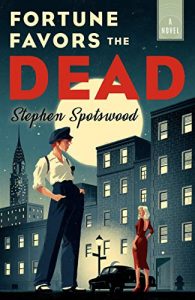 The first book in the Pentecost and Parker series, the utterly marvelous
The first book in the Pentecost and Parker series, the utterly marvelous 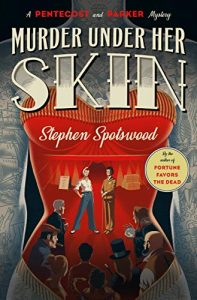 Escape Rating A-: Both of Pentecost and Parker’s previous cases,
Escape Rating A-: Both of Pentecost and Parker’s previous cases, 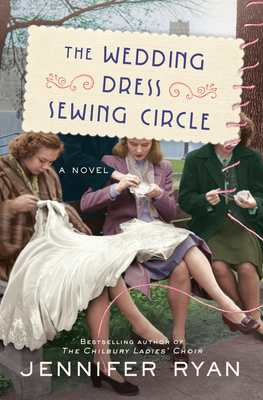 The Wedding Dress Sewing Circle by
The Wedding Dress Sewing Circle by 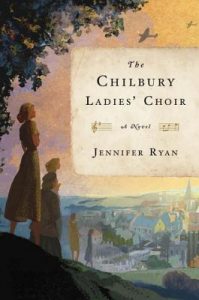 Escape Rating A: I was looking for, not exactly a comfort read as most of my comfort reads start with murder, but rather a comfortable read for the end of this week. It’s kind of surprising that led me to World War II, not exactly a comfortable time for ANYONE, but this actually fit the bill quite nicely. I adored one of the author’s previous books,
Escape Rating A: I was looking for, not exactly a comfort read as most of my comfort reads start with murder, but rather a comfortable read for the end of this week. It’s kind of surprising that led me to World War II, not exactly a comfortable time for ANYONE, but this actually fit the bill quite nicely. I adored one of the author’s previous books, 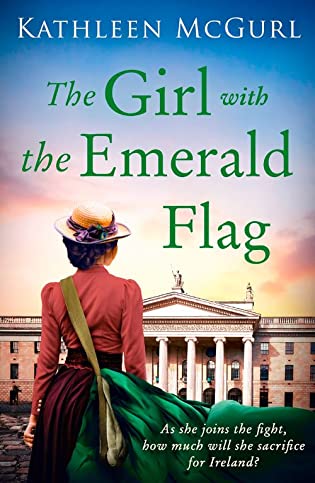 The Girl with the Emerald Flag by
The Girl with the Emerald Flag by 
 Kathleen McGurl lives near the coast in Christchurch, England. She writes dual timeline novels in which a historical mystery is uncovered and resolved in the present day. She is married to an Irishman and has two adult sons. She enjoys travelling, especially in her motorhome around Europe and has of course visited Ireland many times.
Kathleen McGurl lives near the coast in Christchurch, England. She writes dual timeline novels in which a historical mystery is uncovered and resolved in the present day. She is married to an Irishman and has two adult sons. She enjoys travelling, especially in her motorhome around Europe and has of course visited Ireland many times.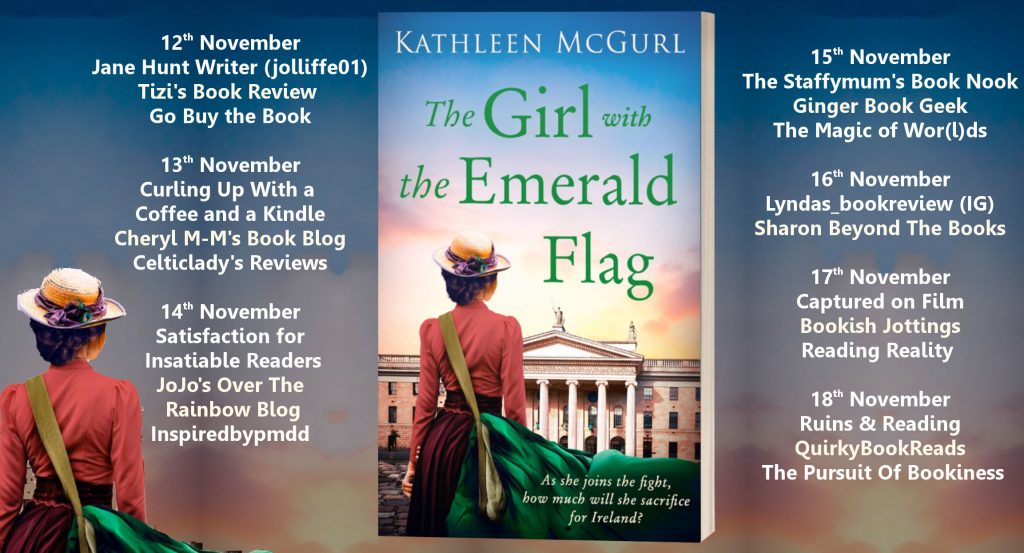
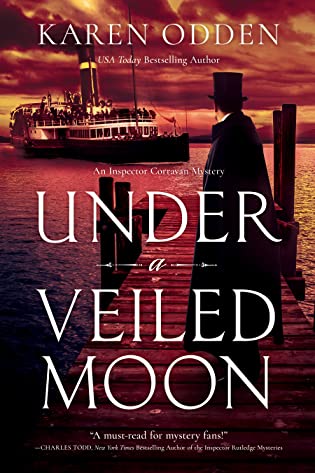 Under a Veiled Moon (Inspector Corravan #2) by
Under a Veiled Moon (Inspector Corravan #2) by 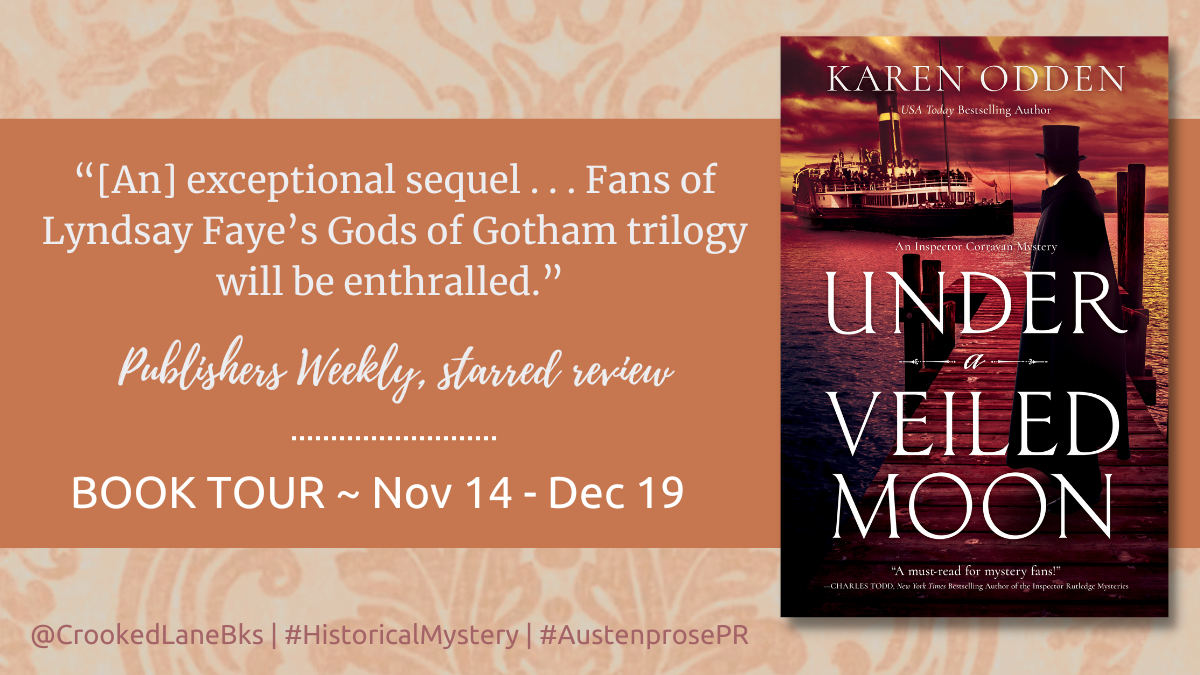
 Karen Odden
Karen Odden